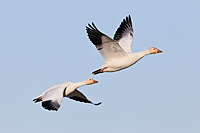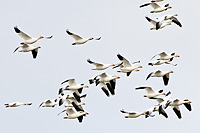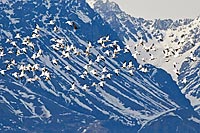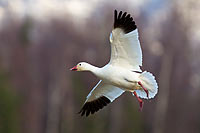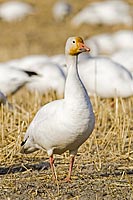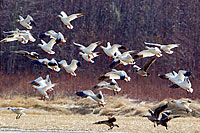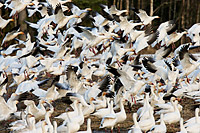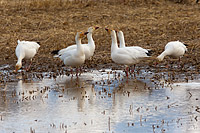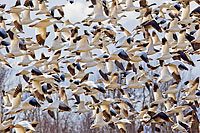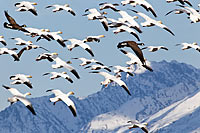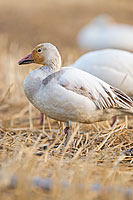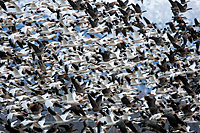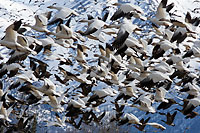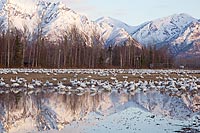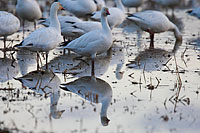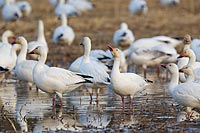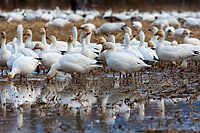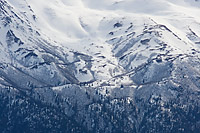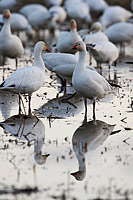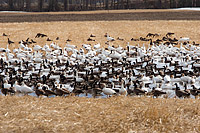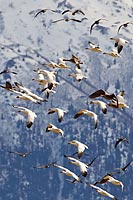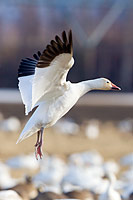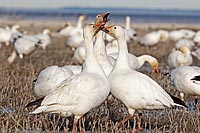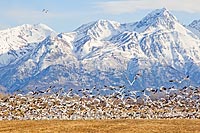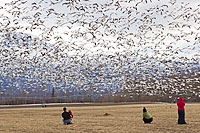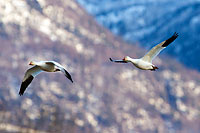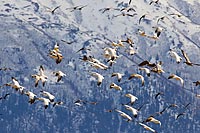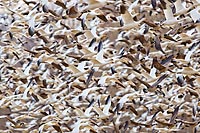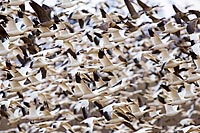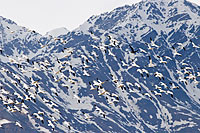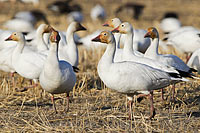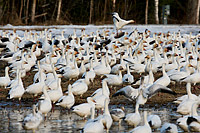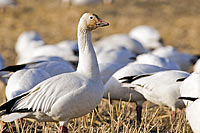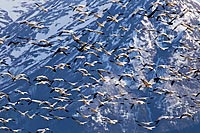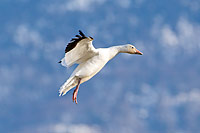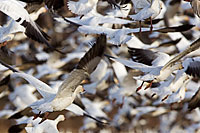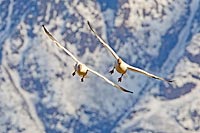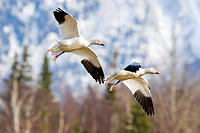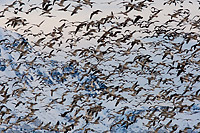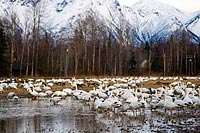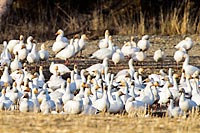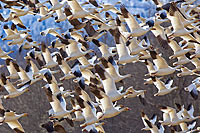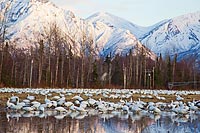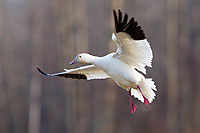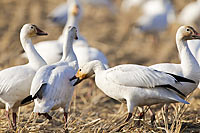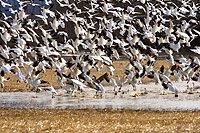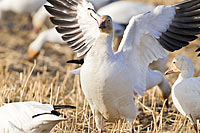 |
~ SNOW GEESE of ALASKA ~
| |
|
Snow Geese General Information |
|
Snow Geese are among the many species of migratory birds making their annual journey to Alaska.
In the spring, they have a white plumage with black tipped wings. Their bill and legs are pink. Males and females are similar
in appearance, with the male being slightly larger.
Snow Geese have a wingspan of approximately 3 feet.
|
|
|
|
Large Flock of Snow Geese
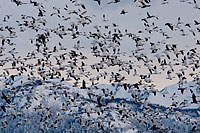 |
|
|
Common Name:
Scientific Name:
|
Snow Goose
Chen caerulescens
|
Class:
Family:
|
Aves
Anatidae
|
Breeding Range:
Winter Range:
|
Alaska & Arctic Coastal Regions
Lower 48, Gulf Regions
|
Length:
Weight:
|
60 to 80 cm (Adult)
2 to 3 kg (Adult)
|
| |
At the peak of the migration period, thousands of Snow Geese darken the skies in Alaska. They take a rest stop in the farmland of the Matanuska valley.
|
|
|
Snow Geese migrate every year from their winter grounds in the lower 48 states to the Arctic and Subarctic coastal regions of North America.
By April-May, the Spring migration is well under way. During that period, large flocks of Snow Geese can be seen in south central Alaska, on their journey to their breeding grounds.
|
|
|
Snow Goose Up Close
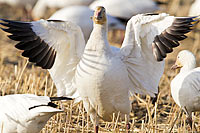 |
|
|
|
|
|
|
|
|
|
During their Spring migration, Snow Geese can cover 2000 to 3000 miles.
|
|
|
Thousands of Snow Geese take off at the same time, in a loud sky ballet.
|
|
|
|
|
|
|
|
Snow Geese are known to pair up with a single mate, maintaining their bond for life. They start nesting in late May, racing
against the short Alaskan summers to raise their chicks.
|
|
|
|
|
Snow Geese taking a rest
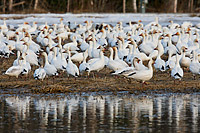 |
|
|
|
|
|
The female Snow Goose usually lays 3 to 5 eggs which are incubated for 3 to 4 weeks.
|
|
|
|
|
|
Although the Snow Goose population was only a few thousand in the early 1900's, it has enjoyed a strong and steady recovery, with numbers now reaching
5 to 7 million worldwide. They are among the most abundant waterfowl.
|
|
|
|
|
|
|
|
|
Some Biologists are concerned that the abundance of Snow Geese is posing a threat to the sustainability of the ecosystem.
|
|
|
In flight, Snow Geese reach speeds of roughly 40 miles per hour. During their migration,
they maintain altitudes between 7000 and 9000 feet.
| |
|
|
|
In Alaska, Snow Geese can be seen in the Matanuska Valley.
Snow Goose in Flight
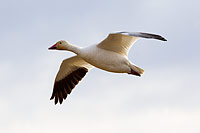 |
|
|
|
|
|
|
With a plumage that is almost entirely white except for the black tipped wings, the large flocks of Snow Geese make an unmistakable
impression as they descend from the sky.
|
|
|
|
|
Snow Goose Flock
 |
|
|
|
Snow Geese enjoy a rest near a pond in the rich farmland of the valley.
|
|
Snow Geese in the sky, flying against a mountain backdrop.
| |
|
As the Snow Geese fly in large formations, they make a
continuous symphony of calls.
|
|
|
|
|
|
|
Snow Geese seen during their migration north to Alaska.
|
|
|
|
|
|
|
|
|
|
|
Along their migratory journey, Snow Geese will often stop to take a rest
and feed.
|
Go to the Moon & Get the Best Pictures
...Smile... ' Click! '

[email protected]
© Copyright Go2Moon, Alaska

